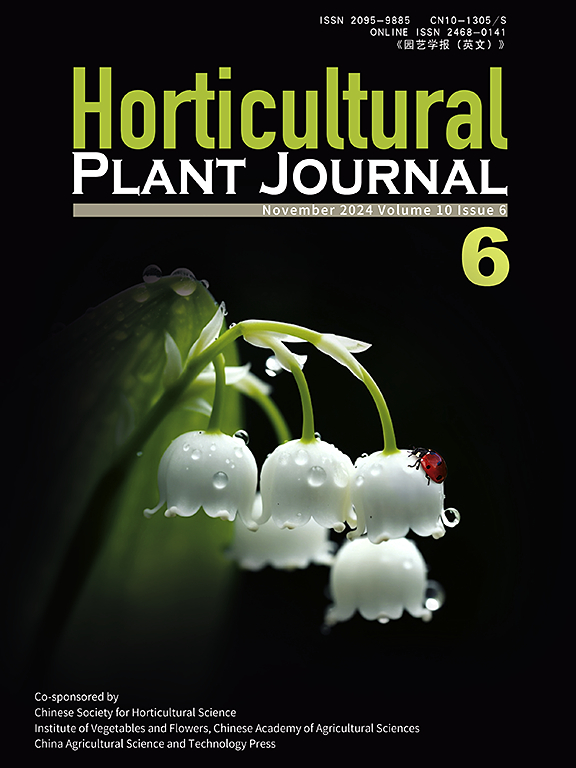Transcriptome and metabolome analysis reveals regulatory network associated with light-independent anthocyanin biosynthesis in blueberry fruit
IF 6.2
1区 农林科学
Q1 HORTICULTURE
引用次数: 0
Abstract
Anthocyanins are vital secondary metabolites contributing to fruit pigmentation and antioxidative properties. While light is a well-known regulator of anthocyanin biosynthesis, the molecular basis of light-independent anthocyanin accumulation remains underexplored. In this study, integrated analysis of metabolome and transcriptome showed that the anthocyanin content in blueberry (转录组和代谢组分析揭示了蓝莓果实中与光不依赖性花青素生物合成相关的调控网络
花青素是促进水果色素沉着和抗氧化特性的重要次生代谢物。虽然光是众所周知的花青素生物合成的调节因子,但不依赖光的花青素积累的分子基础仍未被充分探索。本研究通过代谢组学和转录组学的综合分析表明,光不透套袋处理使蓝莓果实中花青素含量略有降低,而花青素生物合成基因的转录受到不同程度的抑制,说明套袋处理对花青素积累有轻微的影响。进一步观察表明,果实套袋对乙烯产量没有影响,但降低了ABA含量。值得注意的是,两个VcMYBA/ myb1在不透光套袋处理下没有转录改变。组织化学GUS分析和药理学操作一致表明VcMYBA/MYB1的表达不依赖于光,并且是乙烯诱导的。此外,WGCNA分析显示3759个基因与MYBA/MYB1呈正相关,如乙烯相关基因等。此外,VcbZIP55s和VcCOP1s在套袋处理下分别被激活和失活。这些发现为蓝莓果实中不依赖光的花青素生物合成提供了一个框架。
本文章由计算机程序翻译,如有差异,请以英文原文为准。
求助全文
约1分钟内获得全文
求助全文
来源期刊

Horticultural Plant Journal
Environmental Science-Ecology
CiteScore
9.60
自引率
14.00%
发文量
293
审稿时长
33 weeks
期刊介绍:
Horticultural Plant Journal (HPJ) is an OPEN ACCESS international journal. HPJ publishes research related to all horticultural plants, including fruits, vegetables, ornamental plants, tea plants, and medicinal plants, etc. The journal covers all aspects of horticultural crop sciences, including germplasm resources, genetics and breeding, tillage and cultivation, physiology and biochemistry, ecology, genomics, biotechnology, plant protection, postharvest processing, etc. Article types include Original research papers, Reviews, and Short communications.
 求助内容:
求助内容: 应助结果提醒方式:
应助结果提醒方式:


